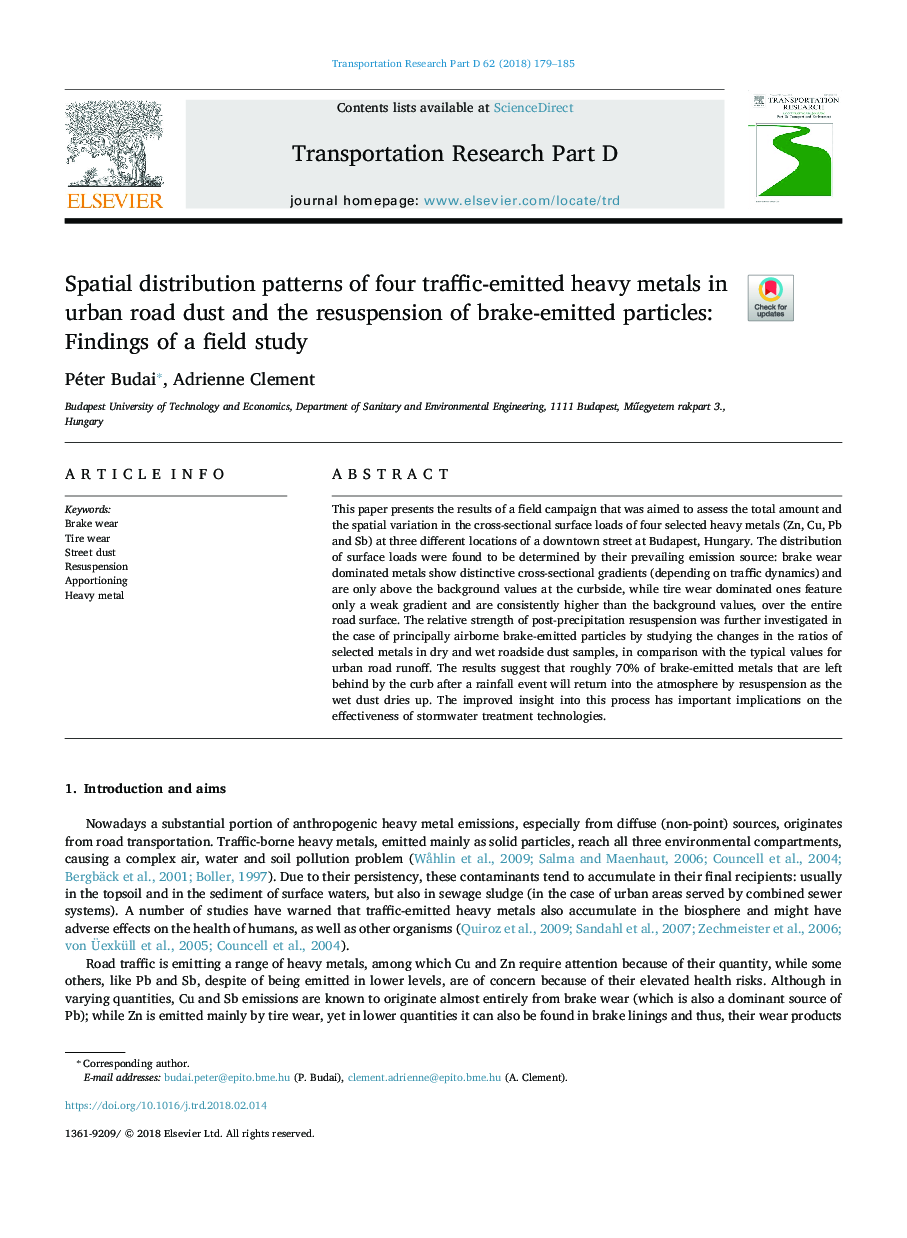| Article ID | Journal | Published Year | Pages | File Type |
|---|---|---|---|---|
| 7498716 | Transportation Research Part D: Transport and Environment | 2018 | 7 Pages |
Abstract
This paper presents the results of a field campaign that was aimed to assess the total amount and the spatial variation in the cross-sectional surface loads of four selected heavy metals (Zn, Cu, Pb and Sb) at three different locations of a downtown street at Budapest, Hungary. The distribution of surface loads were found to be determined by their prevailing emission source: brake wear dominated metals show distinctive cross-sectional gradients (depending on traffic dynamics) and are only above the background values at the curbside, while tire wear dominated ones feature only a weak gradient and are consistently higher than the background values, over the entire road surface. The relative strength of post-precipitation resuspension was further investigated in the case of principally airborne brake-emitted particles by studying the changes in the ratios of selected metals in dry and wet roadside dust samples, in comparison with the typical values for urban road runoff. The results suggest that roughly 70% of brake-emitted metals that are left behind by the curb after a rainfall event will return into the atmosphere by resuspension as the wet dust dries up. The improved insight into this process has important implications on the effectiveness of stormwater treatment technologies.
Related Topics
Life Sciences
Environmental Science
Environmental Science (General)
Authors
Péter Budai, Adrienne Clement,
